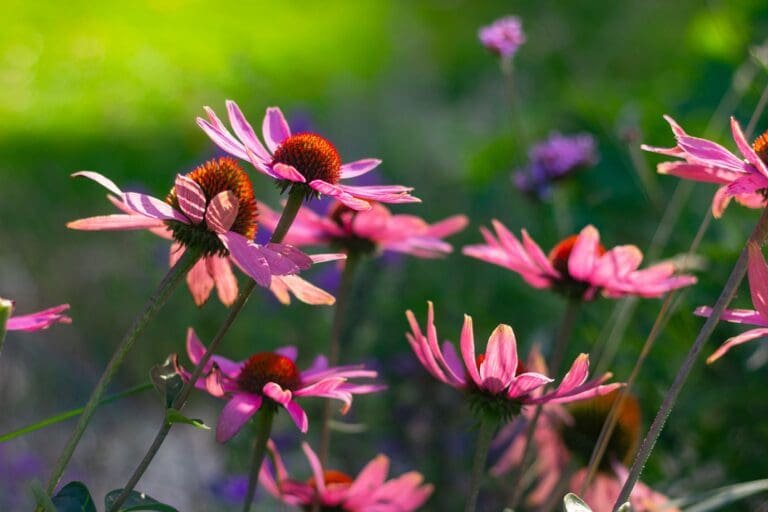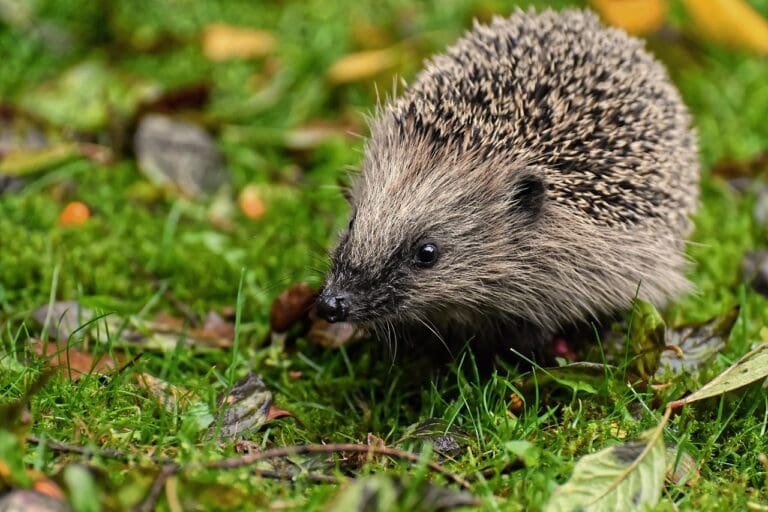Want to add some cheerful chirping and fluttering action to your garden? Attracting birds to your garden is a total win-win! Not only do birds delight with their songs and bustling wings, but they’re also excellent garden buddies. They feast on pesky bugs and help spread seeds far and wide.
Making your green space a bird paradise is easy as can be. Just follow a few simple tips and before you know it, your garden will be absolutely brimming avian activity!
Affiliate Disclaimer: As an Amazon Associate, I earn from qualifying purchases.
1. Provide Natural Food Sources
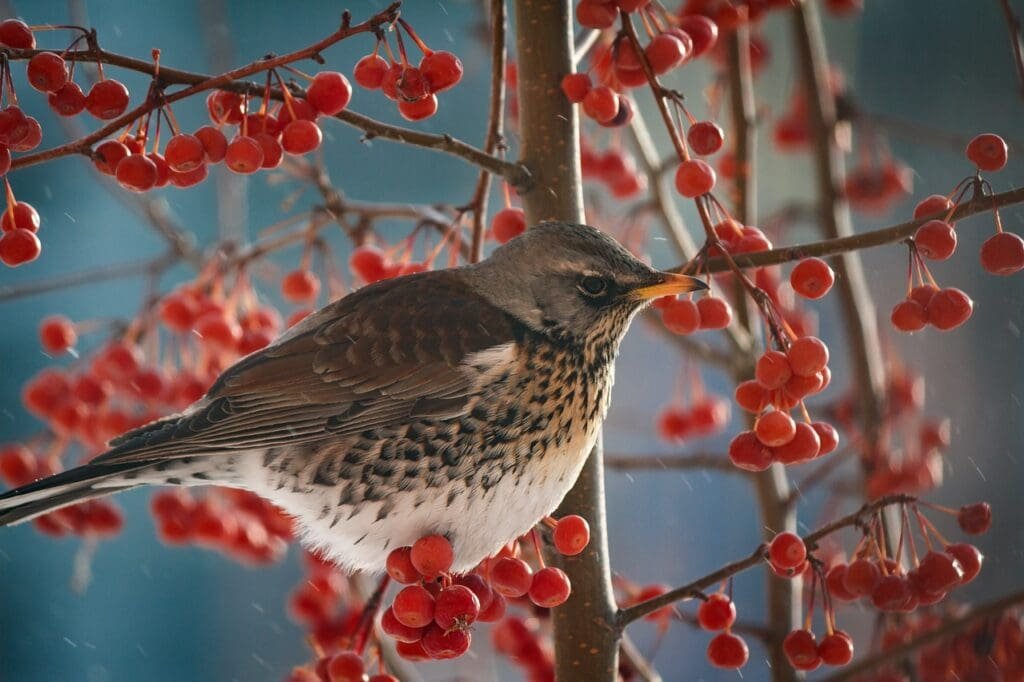
Offering diverse, natural foods sources is key for attracting all types of birds to your garden. Different birds have unique diets, including fruits, berries, seeds, nectar, and insects. Plant an assortment of plants that produce these foods to bring in more species of birds.
- Fruit and Berry Plants – Blackberries, blueberries, strawberries, raspberries, cherries, crabapples, and mulberries.
- Seed Producing Plants – Sunflowers, coneflowers, coreopsis, rudbeckia, cosmos, amaranth, and millet.
- Nectar Plants – Trumpet vine, fuchsia, salvias, hummingbird mint, lantana, bee balm, and cardinal flower.
- Insect Friendly Plants – Marigolds, zinnias, asters, daisies, sedum, and goldenrod.
2. Provide Shelter

In addition to food sources, birds need places to hide, roost, nest, and get out of severe weather. Dense shrubs and evergreens are perfect for concealment from predators and shelter from the elements.
- Evergreen Trees and Shrubs – Spruces, firs, arborvitae, junipers, hemlocks, hollies, and pines. The thick cover they provide is appealing to birds.
- Flowering Shrubs – Lilacs, forsythias, hydrangeas, and other deciduous bushes give good shelter when fully leafed out.
- Brush Piles – Piling up cut branches and trimmings creates nooks and hides for ground dwelling species.
- Roosting Pockets – Clusters of tall ornamental grasses allow birds to roost above the ground. Examples include mound sedge and Karl Foerester grass.
- Nesting Boxes – Put up nest boxes designed specifically for the birds you want to attract, like bluebirds, wrens, or owls.
Check out the best trees for small gardens.
3. Provide Water
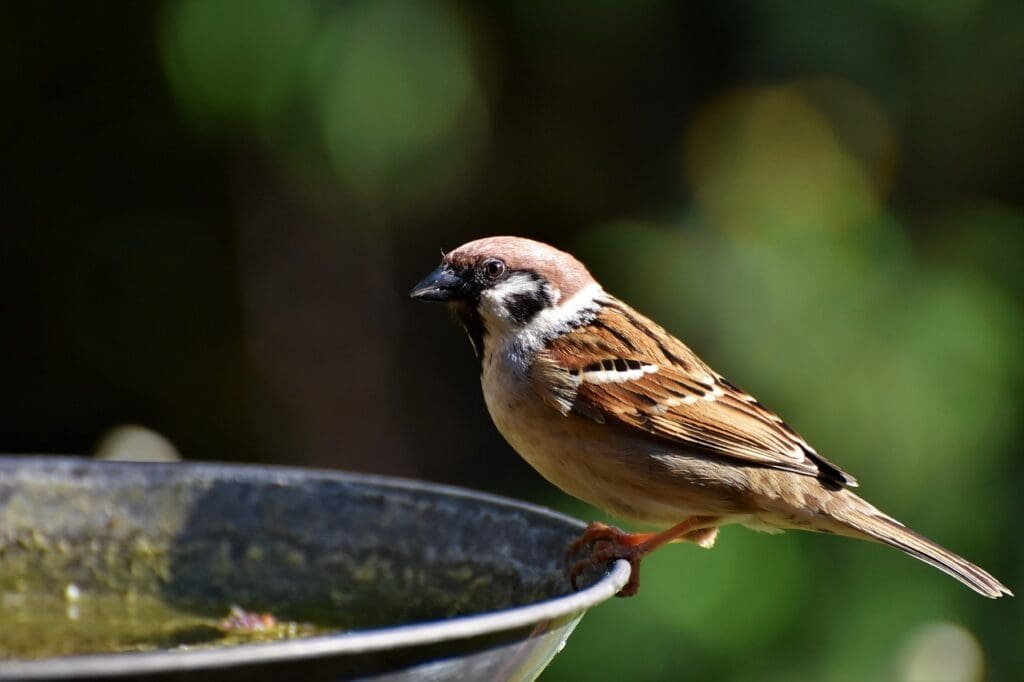
Water sources provide vital hydration and bathing opportunities for birds. The movement and sound of dripping or moving water is particularly enticing.
- Bird Baths – Choose shallow, wide bowls and include textured stone surfaces for adequate footing. Keep water fresh by changing it out frequently.
- Water Features – Dripping bird baths, little fountains, or bubbling ponds attract more birds by adding movement and sound.
- Ground Birdbaths – Use a dish style birdbath or line a shallow bowl with pebbles for birds that prefer bathing on the ground.
4. Offer Supplementary Bird Feed
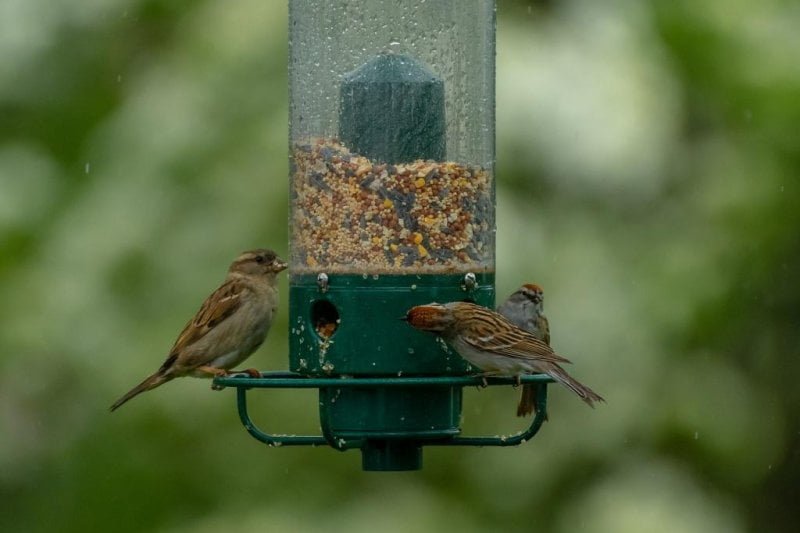
While natural food sources are best, bird feeders do provide supplemental nutrition to birds at critical times of year when natural foods are scarce. Offer specially designed feeders and choose high quality birdseed.
- Seed Feeders – Hopper, tube, and platform feeders dispense seeds, including mixes, sunflowers, millet, and nyjer thistle.
- Suet Feeders – Suet feeders provide fat and protein from rendered beef fat or seed butter cakes. Woodpeckers, nuthatches, and chickadees feast on suet.
- Nectar Feeders – Hummingbird feeders or oriole nectar feeders allow these birds to lap up sugar water.
- Fruit Feeders – Dried mealworms dispensed from mesh bags or trays laden with chopped fruit appeal to robins, bluebirds, and others.
When feeding birds, be responsible by following wildlife feeding best practices, like spacing feeders widely to prevent disease transmission and cleaning surfaces regularly. Also, go easy on excess birdseed, allowing natural food sources to make up the bulk of birds’ diets.
You might also be interested in:
5. Provide Nesting Sites
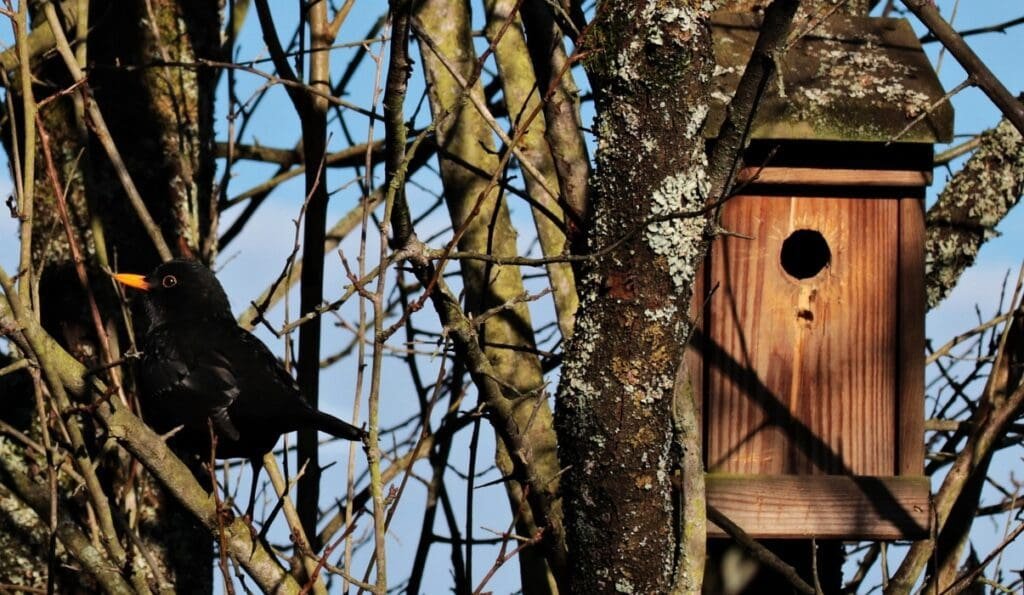
In addition to food and shelter, breeding and nesting sites are essential for attracting birds and increasing their populations over time. Different species have unique nesting needs – provide a variety.
- Nesting Boxes – Mount specialized artificial nest boxes designed for species like bluebirds, swallows, wrens, woodpeckers, kestrels, and owls.
- Natural Tree Cavities – Allow older trees with holes and cavities to stand undisturbed for nesting sites.
- Nesting Platforms – Construct wooden platforms upon which larger birds like hawks, herons, and osprey can build sizable nests.
- Thickets – Dense, thorny shrubs like blackberry brambles, barberries, and pyracantha provide concealed nesting spots for shy species.
- Ground Covers – Leaf litter, wood chip piles, and thatches of ornamental grasses give ground nesting birds like sparrows places to build nests.
- Vertical Spaces – Climbing vines, trellises, clematis, and wall planters provide vertical real estate for nests.
Offering breeding spots will allow birds to raise their young in your habitat. The nestlings will then be inclined to return year after year if the area continues meeting their needs.
You might also be interested in: Birdhouse Positioning Tips: A Strategic Guide To Placing Nest Boxes
6. Keep Bird Feeders Clean

To protect bird health, keeping feeders clean should be part of your garden maintenance schedule. Dirty bird feeders can harbour bacteria, fungi, and diseases that spread quickly between birds congregating in close vicinity as they eat.
Consistent cleaning keeps feeders safe, reduces disease transmission risk, and results in healthy backyard birds!
FAQs – How to Attract Birds to Your Garden
Q. What are the best plants for attracting birds?
Some top plants for attracting birds include: berry bushes (elderberry, mountain ash, pyracantha, etc.); nectar sources (fuchsia, trumpet vine, bee balm); seed plants (sunflowers, coneflowers, black-eyed susans); and insect friendly flowers (zinnias, cosmos, asters).
Q. How can I keep birds away from my fruit trees?
To protect precious fruit from hungry birds, cover trees with bird netting as the fruit ripens. Also, offering separate sacrificial trees and shrubs with berries may satisfy birds away from the fruit you want to harvest.
Q. What is the best type of bird feeder to use?
Tube and hopper feeders with good spill catchers work well for seed mixes. Platform feeders allow access for larger birds. Suet feeders offer fat and protein. Nectar feeders appeal to hummingbirds and orioles. Provide a diversity of feeders to attract more species.
Q. How can I attract hummingbirds to my garden?
Hummers are drawn to the colour red and tubular flowers. Plant bee balm, cardinal flower, trumpet vine, fuchsia and offer specialty hummingbird feeders with red nectar (1 part sugar to 4 parts water). Place feeders in the shade with perches for the birds to rest.
Final thoughts
In summary, attracting birds to your garden requires meeting their basic needs – food, water, shelter, nesting spots, and clean feeders. Offer diverse natural foods through plants, fruiting shrubs and trees. Put up specialized nest boxes suited for desired species. Include a clean water source with a bird bath or fountain. Supplement with bird feeders and high quality birdseed for enhanced nutrition. Your garden will soon become a lively habitat filled with charming, delightful birds!



